I was lucky enough to attend the recent Taste Champagne event held at the Four Seasons Hotel in Sydney. Known as one of the best wine events around, it featured a marvellous array of producers from small artisan growers to the largest houses.
Three things in particular struck me about the champagnes on offer – their concentration of flavour, the level of dosage, and the vintages that stood out.
Champagne is definitely getting bigger – I didn’t write ‘light’ anywhere in my tasting notes. While I love rich Champagnes, I wonder if the move to more intense, concentrated wines is leading to a loss of elegance and harmony. One of the biggest challenges for producers is to channel the many processes and components into a well-integrated product. At Taste Champagne 2018, some wines seemed a little clunky and individual components stood out – better integration may of course come with age.
I also noticed a trend towards less or zero dosage Champagnes. Anything above eight grams per litre was noticeable. I think this trend is making many Champagnes more versatile and food friendly – great for consumers.
Many of the wines I tried were not considered to be from great vintages, yet their quality stood out. My favourite vintage Champagnes on the day came from 2007, 2009, 2011 and 2012. Only 2012 is considered an excellent vintage. In short, when trying Champagne or any wine, keep an open mind, regardless of vintage – there are only great wines, not great vintages.
As a nation we are big champagne consumers – the seventh largest market in the world – and generally speaking we seem to prefer the larger houses. There are over 4,000 small, grower-producers in Champagne yet only about 100 are available here. Thankfully those 100 are among the best.
Champagne is generally a blended wine with the finished product potentially a mix of grapes, vintages, vineyards and winemaking practices. This gives the larger houses incredible flexibility that smaller growers cannot match.
On the other hand, many small growers are making some of the best wines in Champagne today. Crafting exquisite wines from single vineyard sites and giving the consumer greater diversity than ever before.
Agrapart – Only tasted one wine here the Terroirs Blanc de Blanc Grand Cru Extra Brut NV. Purity of fruit and lovely detail. Lemon, minerals, chalky texture, a Champagne that reminded me of Chablis. When I first came across these wines many years ago, I found them to be a little caustic and perhaps trying to make a statement of chalky minerality that could be excessive. Talk about an evolution towards beautiful refinement.
Ayala – Another producer that I have not tried before, and what a revelation. The wines, a 2010 Blanc De Blancs and the Brut Majeur NV, are elegance personified. What struck me though, was their softness, length and breadth across the palate. Most producers are perhaps valuing intensity over finesse. Not Ayala. The wines do not strut, attack or savage you with their presence, rather they caress, hint and suggest. Beautiful, poised and complete.
Dhondt Grellet – Truthfully, I have never heard of this producer. I could not find any information in any of my guides. No matter, the wines are brilliant. The Extra Brut was a masterclass in combining delicacy with textural richness. The Brut, is fuller, more open, expressive and broad with wonderful persistence.
Gatinois – A personal favourite of mine, visiting them in Ay about fifteen years ago. The wines have evolved and dare I say it, for the better. Generous, full bodied wines, a wonderful expression of Pinot Noir. The use of Chardonnay has been increased over the years and the wines have gathered a freshness and balance hitherto not seen.
Laherte Freres – One of my favourite Champagnes, and at a price I can afford! The Extra Brut Ultra tradition NV is a bargain. Lavish and sumptuous, but never heavy. The wine has more individuality than just about any other Champagne. The Les Empreintes NV is full bodied, tangy, spicy with a savoury grip. Unique, brilliant wines.
Larmandier-Bernier – Beautiful wines of purity and poise. The Longitude Blanc de Blancs Premier Cru Extra-Brut is mineral, chalky and long on the palate. The Rose de Saignee is one of my favourite Rose Champagnes. Without sacrificing delicacy or refinement, red fruits dominate with a lovely creamy brioche weight and texture that makes me want to come back for more. Incredible
Veuve Fourny & fils – Beautifully detailed, fine and complete Champagnes. Their Grande Reserve Premier Cru Brut NV is the ideal house Champagne. Pure, mineral, medium bodied with the most perfectly judged dosage, I couldn’t imagine anyone not loving it. The very essence of non vintage Champagne. The Blanc de Blancs is beautiful. Pure, mineral, tangy with a delicate palate. A masterclass of elegance and drinkability. The 2009 Vertus Extra Brut Blanc de Blanc had a lovely citrus minerality and a sense of restrained power. There was a discernible savouriness too. Powerful and complete. A producer of impeccable quality, unique wine and ridiculous value for money.
Vouette & Sorbee – If anyone at Taste Champagne has the right to be called an artisan it is Vouette & Sorbee. 5 hectares only and consequently very rare. It is a wonder any of their wines make it to Australia at all. Only one wine made it to Taste Champagne – the Fidele Extra Brut NV. Red fruit, red apple, spice and minerality build on the palate, the wine growing in the mouth to a very long almost tannic finish. Do not serve this in a flute, rather a Pinot Noir Glass.





